

The strange world of computer-generated novels. It’s November and aspiring writers are plugging away at their novels for National Novel Writing Month, or NaNoWriMo, an annual event that encourages people to churn out a 50,000-word book on deadline.

But a hundred or so people are taking a very different approach to the challenge, writing computer programs that will write their texts for them. It’s called NaNoGenMo, for National Novel Generation Month, and the results are a strange, often funny look at what automatic text generation can do. The developer and artist Darius Kazemi started NaNoGenMo last year, when he tweeted out an off-the-cuff idea.
"I got a ton of people responding saying ‘Oh my god, I’d totally do that,’" Kazemi says. The next day, he opened up a repository on Github where people could post their projects. Nick Montfort’s World Clock was the breakout hit of last year. Neurokernel - A Fly's Brain. It is generally assumed that we know a lot about biological neural networks.
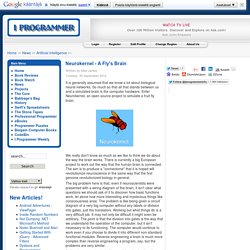
So much so that all that stands between us and a simulated brain is the computer hardware. Enter Neurokernel, an open source project to simulate a fruit fly brain. Entropy - andrew-hoyer.com. Sorry it looks like your browser does not support Entropy :(You may want to look into trying out the latest version of chrome, safari or firefox.
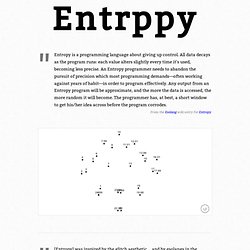
Entropy is a programming language about giving up control. Organic synthesis: The robo-chemist. Illustration by Ryan Snook In faded photographs from the 1960s, organic-chemistry laboratories look like an alchemist's paradise.

Bottles of reagents line the shelves; glassware blooms from racks of wooden pegs; and scientists stoop over the bench as they busily build molecules. Fast-forward 50 years, and the scene has changed substantially. Avail FAQ. Mobile Users: Click here to view our text rendering warning.
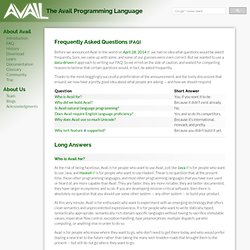
Frequently Asked Questions (FAQ) Before we announced Avail to the world on April 28, 2014, we had no idea what questions would be asked frequently. Sure, we came up with some, and some of our guesses were even correct. But we wanted to use a data-driven approach to writing our FAQ. So we erred on the side of caution, and waited for compelling reasons to believe that certain questions would, in fact, be asked frequently.
The Open Journal by arfon. Dat. Thebigdb/akiva. About. Mondrian/src at master · artursapek/mondrian. Acqualia. Soulver helps you work things out.

It's quicker to use than a spreadsheet, and smarter and clearer than a traditional calculator. Use Soulver to play around with numbers, do "back of the envelope" quick calculations, and solve day-to-day problems. Added iCloud document syncing (10.8 required, App Store version only) Added 29 additional currencies (mainly from Africa, Central Asia & Latin America). Improvements to Spanish, Portuguese, Russian, French & Dutch localizations. Lots of improvements to comments, such as adding a new '//' comment style.
About — tmuxp 0.1.7 documentation. Frankleenaars/gearsketch. How a programmer can discover an asteroid - Ian Webster. I’m a computer scientist.
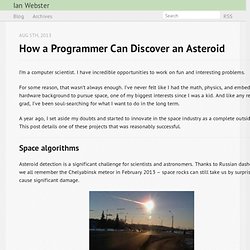
I have incredible opportunities to work on fun and interesting problems. For some reason, that wasn’t always enough. I’ve never felt like I had the math, physics, and embedded hardware background to pursue space, one of my biggest interests since I was a kid. And like any recent grad, I’ve been soul-searching for what I want to do in the long term. A year ago, I set aside my doubts and started to innovate in the space industry as a complete outsider. Space algorithms Asteroid detection is a significant challenge for scientists and astronomers. Every night, large telescopes search the night sky for objects like the Chelyabinsk meteor, taking pictures that are reviewed by computer programs looking for moving dots in the night sky.
“Synthetic Tracking” Set to Revolutionise Near-Earth Asteroid Discovery — The Physics arXiv Blog. Today, that looks set to change thanks to the work of Michael Shao at the Jet Propulsion Laboratory in Pasadena and a few buddies who have developed a new way to spot and track faint, fast-moving objects in space.

These guys say their new technique could increase the rate of discovery by a factor of a thousand. Here’s the problem astronomers face in identifying faint asteroids. They begin by taking two photographs of the night sky a few hours apart and then comparing them to see if anything has moved. Because near Earth objects are generally moving very rapidly by the time they become visible, they ought to show up in these kinds of comparisons.
But although close, these objects are extremely faint so the cameras must take exposures of at least 30 seconds to capture enough light. Now Shao and co have developed a trick that solves this problem. Their idea is simple. About. A Call For Help — Open Dylan. Dylan is a multi-paradigm functional and object-oriented programming language.
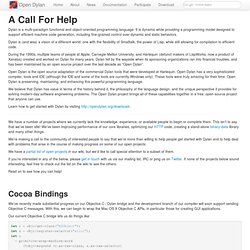
It is dynamic while providing a programming model designed to support efficient machine code generation, including fine-grained control over dynamic and static behaviors. Dylan is (and was) a vision of a different world: one with the flexibility of Smalltalk, the power of Lisp, while still allowing for compilation to efficient code. During the 1990s, multiple teams of people at Apple, Carnegie Mellon University, and Harlequin (defunct makers of LispWorks, now a product of Xanalys) created and worked on Dylan for many years.
Dylan fell by the wayside when its sponsoring organizations ran into financial troubles, and has been maintained by an open source project over the last decade as “Open Dylan”.